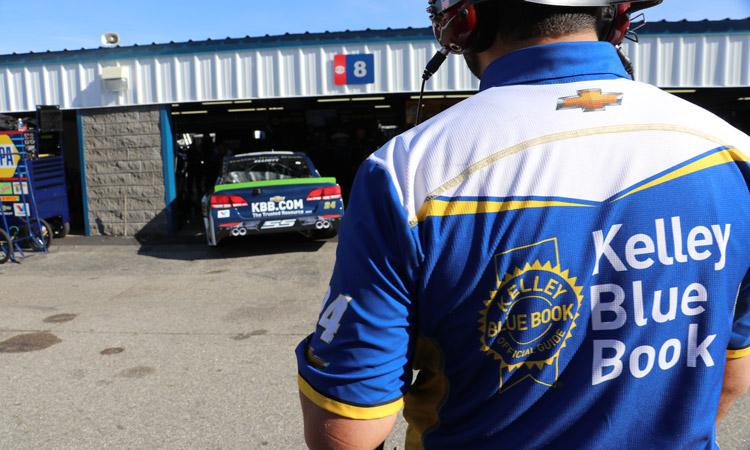Last weekend I had the opportunity to attend at NASCAR race as a guest of Kelley Blue Book. Over the course of the weekend, I came to realize that like any sport there is a high level of complexity involved in NASCAR that may be confusing to new fans. With NASCAR racing though, I think it gets even more complicated since it all seems so simple initially. So many people think all that it is simply a driver pressing the gas pedal down and turning left. In reality though, there are so many levels of complexity that the races can be fun to watch for new and old fans alike ... but with a little help getting started.
This fits well into what Kelley Blue Book itself does too. As "The Trusted Resource", the company helps car owners better understand the value of their cars and how to buy and sell vehicles easier. They do this through their famous "Blue Book Value" system, as well as other research tools, car reviews, and even offer a director of cars for sale through their website. By providing this help, it makes a complex activity much more understandable for the typical car buyer and that's a very good thing. This is why it makes so much sense for Kelley Blue Book to sponsor Chase Elliott #24.
So, in that spirit - here are five things you should know before attending your fist NASCAR race ...
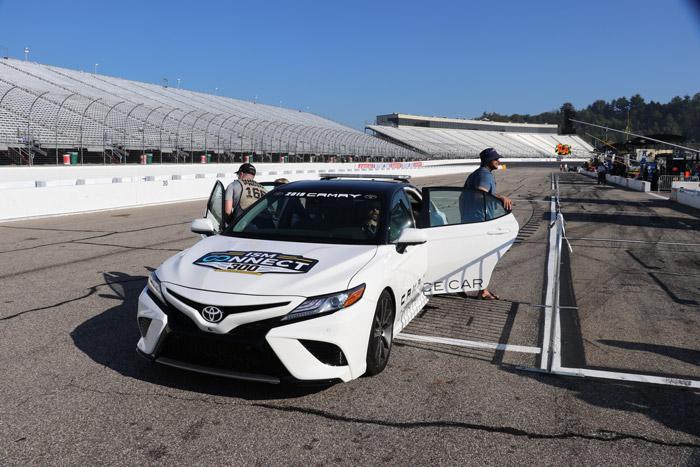
What do the Numbers in the Race Name Mean?
The race we went to was the ISM Connect 300, other races might include other numbers such as the Daytona 500, or the Coke 600. Even among experienced fans there is sometimes confusion here regarding whether that number is the miles, laps, or even kilometers. While each track has a different length the number following the race name typically refers to the number of miles driven. For instance, Daytona is a 2.5 mile long track and drivers will complete 200 laps resulting in 500 miles driven. The ISM Connect 300 is held on the "Magic Mile" at New Hampshire Motor Speedway and so the race is both 300 miles and 300 laps long.
To further complicate the question though, each race may go longer or shorter due to track conditions and other factors. Additionally, the current system is to organize each race into three stages. At the ISM Connect 300, this featured the following order: Stage 1 (75 laps); Stage 2 (75 laps); Stage 3 (150 laps).
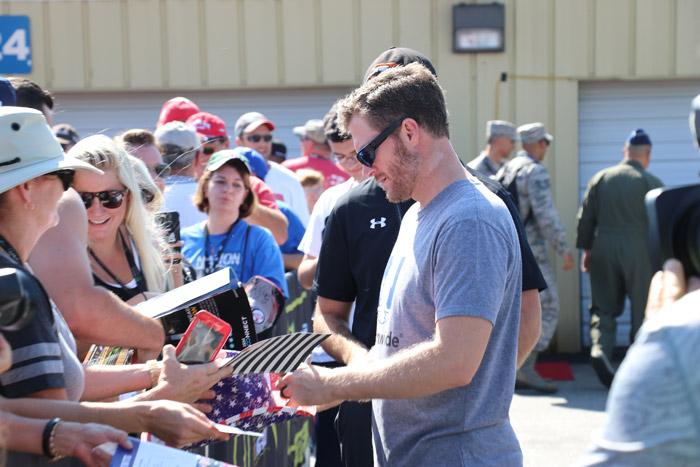
NASCAR Races Can Be a Weekend-long Event
When you go to a baseball game, it's common to show up 30 minutes or even an hour before the game starts so you can grab some food and drinks. NASCAR races though are weekend-long events. In some cases, tracks even schedule events throughout the entire weekend leading up to the big race. During this time, many tracks will have various smaller races, concerts, parades, and fan / driver meetups. Even if you are planning to come just for the Xfinity Cup Series race (NASCAR's most elite group) this is an all-day-affair. You must plan to get there early to find a good parking space and enjoy all of the activities. These include the Fan Zone with different brands offering various experiences (including Free Hair Cuts!) as well as plenty of free product samples, garage tours, and driver autograph sessions. For the most passionate fans you can purchase VIP experiences that provide even more access to your favorite teams.
It's Not Just About the Driver
The NASCAR driver is sort of like the quarterback in a football game. He's the most visable face of the team and gets all the glory (and jeering sometimes too!). NASCAR racing though really is a team sport however. Equally important to having a great driver is an awesome pit team that is fast and smart. This not only includes being able to lug heavy tires and change them quickly but also experience with advanced computing to track fuel consumption, aerodynamic drag, and fraction of a second changes. Even beyond race day, these guys are training as hard as any professional athelete to shave seconds of of tasks.
Additionally, back in the home garage, cars are being worked on weeks in advance of race day and tuned for specific track types. A great driver might be able to do well in any car - but to WIN the driver and his team must be working together as one.
Why do the Drivers Move in Zig Zag Patterns Behind the Pace Car?
These are performance vehicles designed to operate at more than 100 mph, so when they are being led by the pace car it is important that they keep the tires warm and that they wear evenly. By driving in a zig zag pattern it increases friction and ensures that the tires maintain a consistent surface so that they are ready to go as soon as the pace car moves off the track.
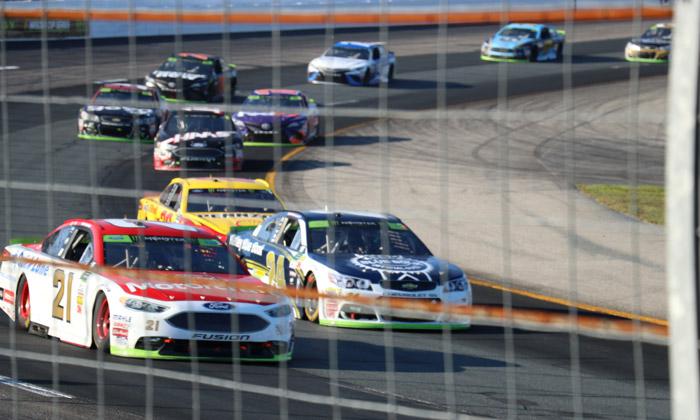
Pick a Team, Brand or Manufacturer to Cheer for ...
With most sports, it's easy to simply pick your home town team to cheer for but in NASCAR these drivers are from all over the country (though most are based near Charlotte, North Carolina). For a new fan, this makes it more challenging to pick who they should follow in the race. However, unlike most other sports NASCAR is VERY heavily branded. If you are a Ford guy then simply cheer on the drivers behind the wheel of a Ford Fusion. Similarly, if you happen to love M&Ms, Smithfield, or Miller Light - there's a driver for you to cheer on.
I personally don't have a strong allegiance to any of the teams but because I was a guest of Kelley Blue Book and we got to meet Chase Elliott before the race, things were a lot more exciting. Even though he wasn't one of the top finishers it was still exciting watching as he jockeyed for position trying to move ahead.
What do the Different Colored Flags Mean?
There are many different flag colors that you will see in a race, but the main colors that you will see on every race include Yellow, White, and Checkered. A Yellow flag is often referred to as the caution flag and indicates that there is something on the track that drivers need to slow to a pre-determined speed to avoid. A White Flag indicates the last lap of the race. Finally, a Checkered Flag means that the lead driver has crossed the finish line.
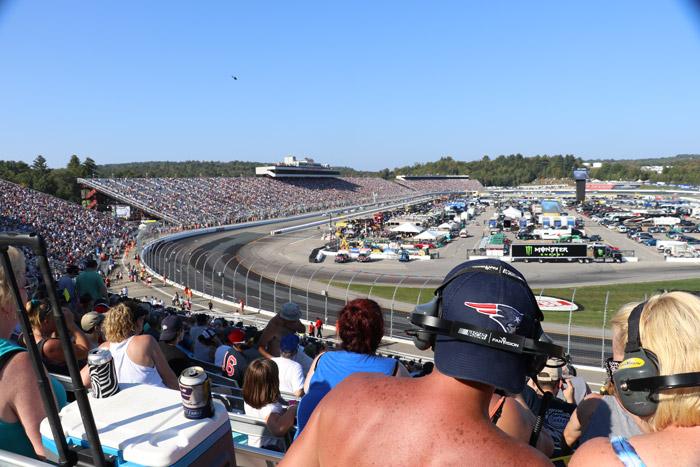
Make Sure to Grab the Right Gear To Enjoy the Race
There's nothing wrong with coming to a race just to watch the experience but there are a few simple things you need to be prepared with. These include: sunscreen, comfortable shoes, and ear plugs. It is hard to articulate the amazing level of noise generated by all the cars on the track but at it's peak the noise will exceed 140 decibels. Doctors typically recommend having protection at 85 decibels. There will be many stands selling headsets that will help, but you are best simply bringing a few pairs of squishy foam ear inserts. If you forget, most people bring extras and you can also ask at any first aid or information stand too.
To get the best experience though, I recommend that you get a race radio or even better - Fan Vision. These radios will allow you to listen in as the drivers talk to their teams and in the case of FanVision it will even allow you to watch video live from the cars as well as instant information about car position and performance. NASCAR races can be confusing, so these really help make things a lot easier to follow.
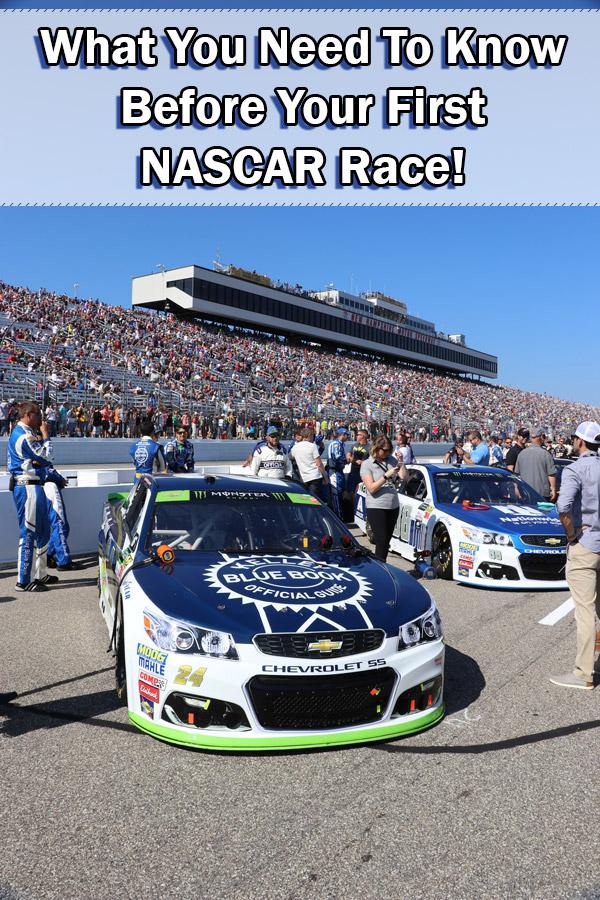
NASCAR Words and Terms That Fans Need to Know
While there are concepts that are essential to fully understanding a NASCAR race, equally important is a basic vocabulary. These are words that you may hear on the radio or as banter between fans. Don't worry though, these NASCAR terms aren't that hard.
Restrictor Plate - NASCAR cars are VERY FAST, so fast in fact that some courses artificially limit their capabilities so that the sport stays as safe as possible. A "restrictor plate" is a thin metal plate that is installed to restrict airflow from the carburetor into the engine. This results in the engine providing less horsepower and ultimately reduced speeds. Restrictor Plate Racing is used at Daytona International Speedway and Talladega Superspeedway.
Downforce - Downforce is the force caused by air flowing over the car and pushing it down towards the ground as well as the centrifugal forces caused by the car going around a corner at an angle. This downforce results in tighter grip between the tires and track but may also result in higher drag through increased resistance.
Spoiler - Spoilers are found on the back of each car and helps to create downforce on the rear of the car and increasing grip.
Dirty Air - NASCAR drivers are often packed into a cluster of cars and the air going into the vehicle is often tainted with smoke, oil, and debris as well as simply the turbulent air caused by the car in front. Cars go faster with "clean air" since the engines are able to produce maximum horsepower and there is less turbulence for the driver to overcome.
Drafting - While Dirty Air can cause troubles for a driver following a pack, if they can get close enough to the lead car then they can actually get sucked into the vacuum caused by the air flowing over the lead car. This helps by literally pulling the tailing car along with it and reducing fuel consumption.
Groove - This is slang for the path that a NASCAR driver will follow around the track. While they may theoretically have full range of the pavement, each track has an optimal path or line that an individual driver might prefer.
Pit - The Pit is where drivers make a pit stop so the team may change tires, add fuel, and make adjustments to the car. Drivers will "pit" several times during a race and this becomes a strategic decision since time is lost - but power and handling can be improved with fresh tires and a full tank of gas.
Pace Car - The Pace Car leads the pack of cars in the beginning of each race, between stages, and during cautions to ensure that nobody gets out of line. It sets the pace for the cars to follow.
